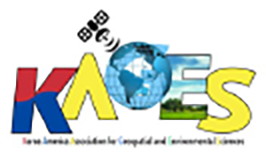Abstract
This paper explores the use of spatial interpolative methods in conjunction with object based image analysis to estimate turf grass land cover quantity and allocation in Greater Boston, Massachusetts, USA. The goal is to learn how accurately turf grass can be estimated if only a limited portion of the study area is mapped. First, turf grass land cover is mapped at the 0.5 m resolution across the entire Plum Island Ecosystems (PIE) Long Term Ecological Research (LTER) site, a 1143-km2 area. Second, the turf grass map is aggregated into 120 m cells (N = 84,661). Third, a random sample of these 120 m cells are selected to generate an estimate of the unselected cells using four estimation methods - Inverse Distance Weighting, Kriging, Polygonal Interpolation, and Mean Estimation. The difference between known and estimated values is recorded using 120 m cell and census block group stratifications. This process is repeated 500 times for sample sizes of 2.5%, 5.0%, 7.5% and 10.0% of the study area, for a total of 2000 iterations. The average error statistics are reported by sample size, strata, and estimation method. Inverse distance weighting performed best in terms of total error across all sample sizes. It was found that by mapping only 2.5% of the study area, all four methods outperformed a recently published approach to estimating turf grass in terms of overall error.
Recommended Citation
Runfola, Daniel S.M.; Hamill, Thomas; Pontius, Robert Gilmore Jr.; Rogan, John; Giner, Nick; Decatur, Albert; and Ratick, Samuel
(2014)
"Using Fine Resolution Orthoimagery and Spatial Interpolation to Rapidly Map Turf Grass in Suburban Massachusetts,"
International Journal of Geospatial and Environmental Research: Vol. 1:
No.
1, Article 4.
Available at:
https://dc.uwm.edu/ijger/vol1/iss1/4

